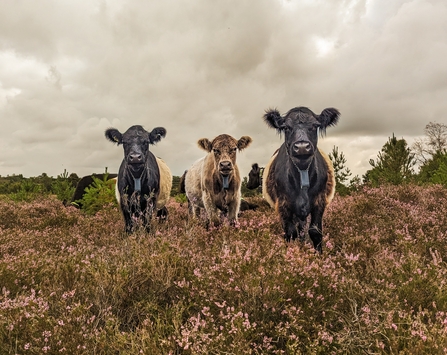Alongside a flock of sheep, our carefully managed herds of Belted Galloway cattle are a crucial component of Surrey Wildlife Trust’s conservation grazing efforts. This type of grazing supports the management of important habitats and allows nature to flourish, so it is of paramount importance to the Trust to ensure the health and wellbeing of our grazing livestock. This is where our wonderful team of volunteer cattle checkers comes in!
Modern livestock require a great deal more human support than their ancestors, so our cattle checkers are a highly appreciated asset to Surrey Wildlife Trust. By helping us look after the animals they have become an essential part of the Grazing Team. It would be an impossible task for us to undertake all the necessary welfare checks ourselves, so our volunteers are much needed eyes on the ground, always looking out for potential problems with both livestock and infrastructure. Our volunteers have saved the day on many occasions by alerting us to issues such as a sick animal or non-functioning water trough.
We often hear back from members of the public who have stumbled upon one of our volunteers, whose passion for the animals clearly shone through in conversation. We owe huge thanks to our volunteers who spread the word about the work we are doing and for inspiring new people to join the team. Our grazing volunteers constantly keep us informed with regular updates, and it is always lovely to receive a cheerful email to report that the cows are doing well. Our attentive volunteers have the instinct to spot that an animal ‘just isn’t right' and very often this proves to be the case.


